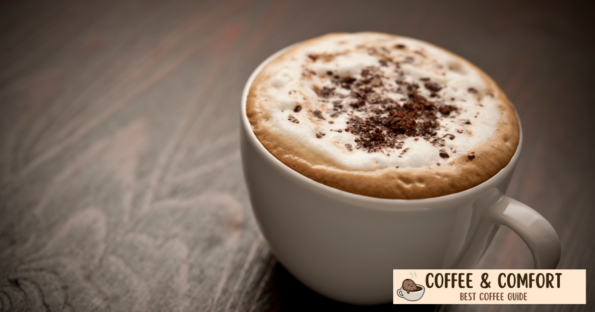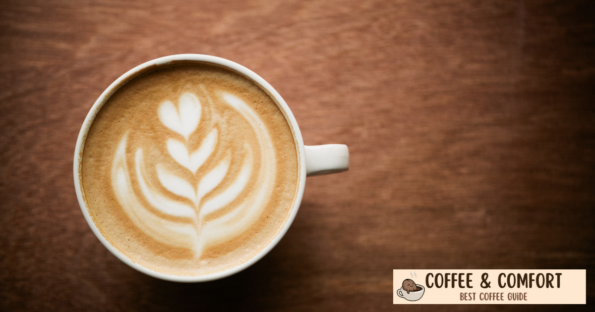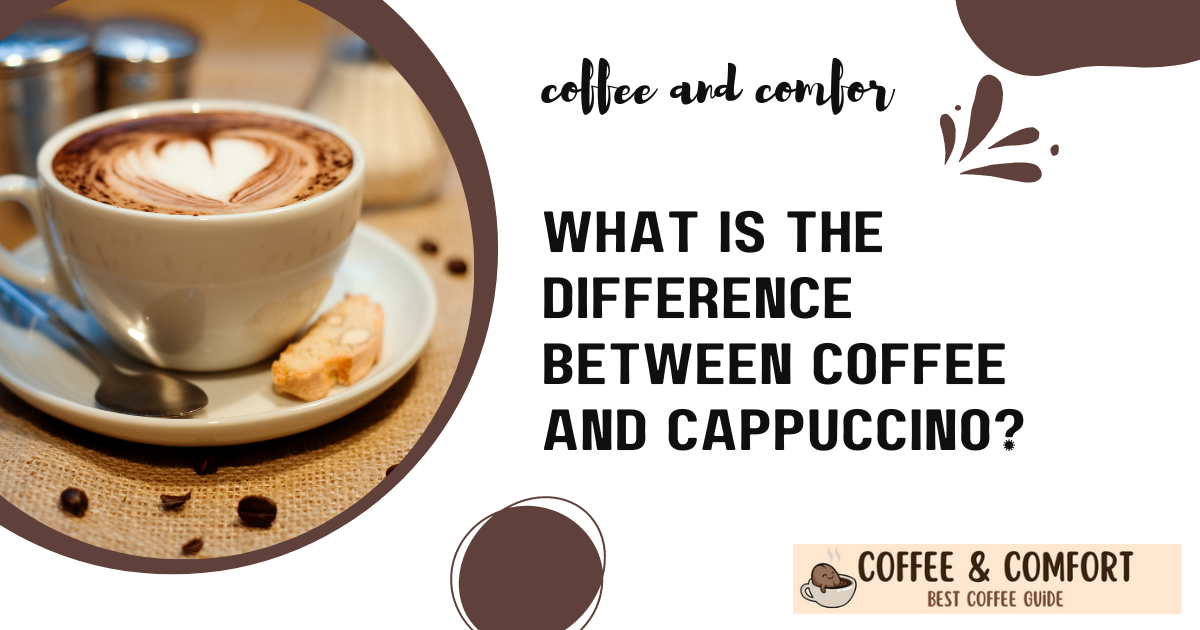Are you ready to embark on a journey of caffeinated enlightenment? Prepare to have your taste buds tantalized and your curiosity satisfied as we delve into the surprising differences between coffee and cappuccino.
In this captivating exploration, we will uncover the secrets behind these beloved beverages, from their unique ingredients to their distinct preparation methods.
So grab a cup of your favorite brew, sit back, and let us guide you through the fascinating world of coffee and cappuccino. Get ready to sip, savor, and discover the true essence of these caffeinated wonders.
What is Coffee?
Coffee is a popular beverage that is made from roasted coffee beans. It is derived from the seeds of the Coffea plant, which is native to tropical regions of Africa. The beans are harvested, processed, and then roasted to bring out their distinct flavors and aromas.
There are various types of coffee beans, including Arabica and Robusta, which have different characteristics and flavors.
Arabica beans are known for their delicate and nuanced flavors, while Robusta beans have a stronger and more bitter taste. The choice of beans can greatly impact the taste of the coffee.
What is Cappuccino?
Cappuccino is a popular Italian coffee beverage that is made by combining equal parts of espresso, steamed milk, and milk foam. It is typically served in a small cup and is known for its creamy texture and rich flavor.
The key ingredient in cappuccino is espresso, which is a concentrated form of coffee made by forcing hot water through finely ground coffee beans.
Espresso is the base of cappuccino and provides the strong and bold flavor that is characteristic of this beverage.
Ingredients of Coffee
Coffee is made from the seeds of the Coffea plant, which are commonly referred to as coffee beans. These beans undergo a series of processes before they are transformed into the beloved beverage that is enjoyed by millions of people around the world.
The main ingredient in coffee is, of course, the coffee beans.
These beans are typically roasted to bring out their rich flavors and aromas. The roasting process also affects the color of the beans, with darker roasts producing a deeper, more robust flavor.
In addition to the coffee beans, water is another essential ingredient in coffee. The quality of the water used can greatly impact the taste of the final brew. Many coffee enthusiasts prefer to use filtered water to ensure a clean and pure taste.

Ingredients of Cappuccino
Cappuccino is a popular Italian coffee beverage that is known for its rich and creamy texture. It is made by combining equal parts of espresso, steamed milk, and milk foam. The ingredients used in cappuccino play a crucial role in determining its taste and overall experience.
1. Espresso:
Espresso is the base of cappuccino. It is a concentrated form of coffee that is brewed by forcing hot water through finely ground coffee beans under high pressure. The intense flavor and aroma of espresso provide the foundation for the cappuccino’s taste.
2. Steamed Milk:
Steamed milk is an essential component of cappuccino. It is created by heating milk and introducing steam to create a velvety texture. The steamed milk adds a creamy and smooth element to the cappuccino, balancing out the strong flavor of the espresso.
3. Milk Foam:
Milk foam is the frothy layer that sits on top of the cappuccino. It is created by aerating the milk, which introduces tiny air bubbles and gives the foam its light and airy texture. The milk foam adds a visually appealing element to the cappuccino and enhances the overall drinking experience.
The combination of these three ingredients creates a harmonious balance of flavors in cappuccino. The rich and bold taste of espresso is mellowed by the creamy steamed milk, while the milk foam adds a touch of sweetness and texture.
It is worth noting that cappuccino can be customized according to personal preferences. Some variations may include additional flavorings such as chocolate, caramel, or vanilla syrup. These additions can further enhance the taste and create unique flavor profiles.
Preparation Methods of Coffee
When it comes to the preparation methods of coffee, there are several ways to make this beloved beverage. The most common method is using a coffee maker or a drip brew machine.
This involves pouring water into a reservoir, adding ground coffee to a filter, and allowing hot water to drip through the coffee grounds and into a pot or carafe.
Another popular method is the French press, which involves steeping coarsely ground coffee in hot water for a few minutes before pressing down a plunger to separate the coffee grounds from the liquid.
This method is known for producing a rich and full-bodied cup of coffee.

Preparation Methods of Cappuccino
Cappuccino is a popular Italian coffee beverage that is known for its rich and creamy texture. The preparation of cappuccino involves a specific method that sets it apart from regular coffee.
Here are the steps involved in making a delicious cup of cappuccino:
1. Espresso Shot:
Like coffee, cappuccino starts with a base of espresso. An espresso shot is a concentrated form of coffee that is made by forcing hot water through finely ground coffee beans under high pressure. The espresso shot forms the foundation of a cappuccino.
2. Steamed Milk:
One of the key elements of a cappuccino is the steamed milk. To create the perfect texture, the milk is heated and frothed using a steam wand on an espresso machine. The steam wand introduces steam into the milk, creating tiny bubbles and giving it a velvety texture. The frothed milk is then poured over the espresso shot.
3. Milk to Espresso Ratio:
The ratio of milk to espresso is crucial in making a cappuccino. Traditionally, a cappuccino is made with equal parts espresso, steamed milk, and milk foam. This creates a balanced and harmonious blend of flavors and textures.
4. Layering:
When preparing a cappuccino, it is important to achieve the perfect layering of the espresso, steamed milk, and milk foam. The espresso shot is poured into a cup, followed by the steamed milk, and finally topped with a layer of milk foam. This layering creates a visually appealing drink with distinct layers of flavors.
5. Optional Garnish:
Some cappuccinos may be garnished with a sprinkle of cocoa powder or cinnamon on top for added flavor and presentation.
The preparation of cappuccino requires skill and attention to detail to achieve the perfect balance of flavors and textures. The combination of the rich espresso, creamy steamed milk, and velvety milk foam creates a luxurious and indulgent beverage that is enjoyed by coffee lovers around the world.
In conclusion, the preparation method of cappuccino involves starting with an espresso shot, steaming and frothing milk, achieving the right milk to espresso ratio, layering the ingredients, and optionally garnishing the drink. These steps result in a delicious and visually appealing beverage that is distinct from regular coffee.
Taste Differences between Coffee and Cappuccino
Coffee and cappuccino are both popular hot beverages made from coffee beans, but they have different flavors and textures.
Coffee
Coffee is a brewed beverage made by pouring hot water over ground coffee beans. It has a strong, bold flavor that can be bitter or acidic, depending on the type of beans used and the brewing method. Coffee can be served hot or cold.
Cappuccino
Cappuccino is an espresso-based drink made with steamed milk and foamed milk. It has a rich, creamy flavor with a hint of bitterness from the espresso. Cappuccinos are typically served in a cup with a layer of foam on top.
| Characteristic | Coffee | Cappuccino |
|---|---|---|
| Flavor | Strong, bold, bitter, or acidic | Rich, creamy, with a hint of bitterness |
| Texture | Thin, watery | Thick, creamy |
| Temperature | Hot | Hot |
| Caffeine content | High | High |
The main difference in taste between coffee and cappuccino is the amount of milk used. Coffee has less milk than cappuccino, which gives it a stronger flavor. Cappuccino has more milk, which mellows out the bitterness of the espresso and creates a smoother, creamier drink.
Conclusion
In conclusion, coffee and cappuccino are two popular beverages that have distinct differences in terms of ingredients, preparation methods, taste, and caffeine content.
FAQ
What is the difference between coffee and cappuccino?
Coffee and cappuccino are both popular beverages, but they have distinct differences. Coffee is a brewed drink made from roasted coffee beans, while cappuccino is a type of coffee that is made with espresso and topped with steamed milk and foam.
What are the ingredients of coffee?
Coffee typically consists of just two ingredients: water and coffee beans. The beans are ground and then brewed with hot water to extract the flavors and aromas.
What are the ingredients of cappuccino?
Cappuccino is made with three main ingredients: espresso, steamed milk, and foam. The espresso is a concentrated form of coffee, while the steamed milk adds a creamy texture, and the foam provides a frothy layer on top.
How is coffee prepared?
Coffee can be prepared in various ways, but the most common method is by brewing. Ground coffee is placed in a filter or a coffee maker, and hot water is poured over it. The water then passes through the coffee grounds, extracting the flavors and creating the brewed coffee.
How is cappuccino prepared?
Cappuccino is prepared using an espresso machine. First, a shot of espresso is brewed, which is then combined with steamed milk. The milk is heated and frothed using the espresso machine’s steam wand, creating a velvety texture. The cappuccino is then topped with a layer of foam.
What are the taste differences between coffee and cappuccino?
Coffee has a strong and bold flavor, with variations depending on the type of beans used and the brewing method. Cappuccino, on the other hand, has a milder taste due to the addition of milk. The espresso provides a rich and robust flavor, while the steamed milk adds sweetness and creaminess.
How does the caffeine content differ in coffee and cappuccino?
The caffeine content in coffee is generally higher than in cappuccino. A standard cup of coffee contains around 95 mg of caffeine, while a cappuccino typically has around 63 mg of caffeine. However, the caffeine content can vary depending on the size of the cup and the strength of the coffee

My name is Michael Jones, and I’m a coffee enthusiast and expert based in the US. I run my own coffee shop, and I’m passionate about everything related to coffee. On my website, Coffee and Comfort, I share my knowledge and tips to help you elevate your coffee experience. Whether you’re a beginner brewer or a seasoned barista, I have something for everyone. I’ll teach you how to choose the right coffee beans, grind them perfectly, and brew a delicious cup of coffee at home. I’ll also share tips on how to make different coffee drinks, like lattes, cappuccinos, and espressos. But more than just teaching you about coffee, I want to help you create a coffee lifestyle that you love. Coffee is more than just a beverage; it’s a way to connect with people and enjoy the simple things in life.
